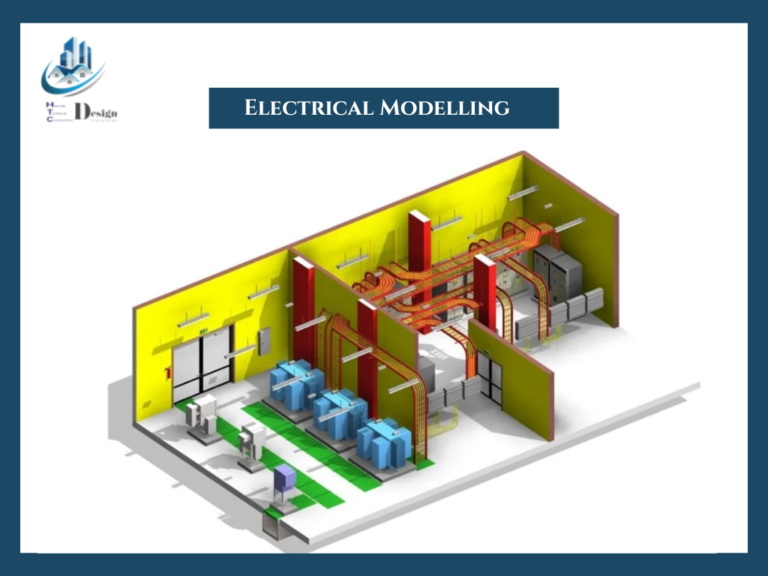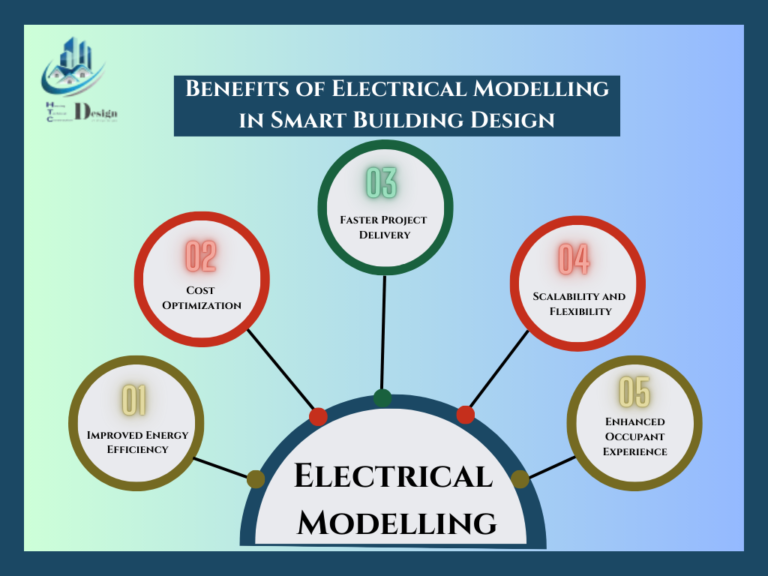Introduction
As the urban environment transforms technically into an advanced ecosystem, the concept of smart buildings has gained rapid speed. These structures integrate intelligent systems and go beyond traditional architecture to increase energy efficiency, living comfort and operational functionality. Smart Building is Electrical Modelling in important parts of the infrastructure, a process that plays a fundamental role in ensuring the spontaneous integration of all electrical systems. From energy spread to automatic control, electrical modeling behaves as a digital blueprint that guides the design, simulation and adaptation of the electrical structure of the smart building.
What is Electrical Modelling?
Electrical modeling refers to the construction of digital representation of electrical systems of a building. These models simulate electric flows, load distribution, and integration of smart technologies, allowing engineers and designers to imagine and analyze how the electrical components will act in real -world conditions. The modeling process includes detailed layouts for renewable energy sources such as power system, lighting, HVAC control, emergency system, IOT device and solar panels.
Using devices such as BIM (building information modeling), autocad electrical, and Revit Meep, can develop professional comprehensive electrical models that are accurate, scalable and suited for design changes. These models also serve as documentation tools throughout the building life cycle – from planning and construction to maintenance and upgradation.

Electrical Modelling as a Backbone of Smart Buildings
Smart buildings depend a lot on the interconnected system. Light, heating, cooling, security and data communication networks should work in harmony. Electrical Modelling is necessary in design and coordinating these systems to ensure optimal performance. Below is given many ways, electrical modeling supports smart building design:
1. Efficient Power Distribution
In smart buildings, the electric load varies according to real -time demands. For example, lighting and air conditioning can be reduced in uncontrolled areas. Electrical Modelling helps engineers designing flexible power distribution systems that suit these variations without compromising safety or performance. This allows the simulation of various load conditions to ensure that the building can efficiently handle peak and off-peak demands.
2. Integration of Renewable Energy
Along with emphasizing sustainable development, many smart buildings include renewable energy sources, such as solar panels and wind turbines. Electrical modeling ensures that these sources are correctly integrated into the building grid. This helps in preventing grid overload and managing energy efficiency, helping energy storage, load sharing and planning a backup system.
3. Automation and Control Systems
Smart buildings depend on automation for tasks such as light control, HVAC regulation and energy management. Electrical Modelling helps imagine and imitating these automation systems, ensuring that all components effectively communicate through a centralized building system (BMS). This modeling ensures that automation is implemented correctly, improving user comfort and reducing energy consumption.
4. Safety and Compliance
Electrical models include essential security features, such as grounding, fault detection, surge protection and emergency power system. They also ensure compliance with national and international electric codes and standards. Prior to construction, designers can simulate potential defect landscapes to reduce risks and meet regulatory requirements.
5. Real-Time Monitoring and Predictive Maintenance
Smart buildings often use sensors to monitor electrical consumption and tool performance in real time. Electric models integrate these systems, allowing BMS to collect data for future maintenance. This approach reduces the cost of downtime and maintenance by identifying those issues, before they proceed.
Benefits of Electrical Modelling in Smart Building Design
One of the main goals of smart building design is reducing energy consumption. Electrical Modelling helps identify energy-saving opportunities through simulation, such as adjusting the level of light on the basis of natural day light or schedule of HVAC use according to the occupancy. These insights enable those informed decisions that improve efficiency. B. Cost Optimation Electrical modeling reduces the material waste and reunion during construction by providing elaborate electrical plans and simulation. This reduces more accurate budget and overall cost. In addition, energy-skilled systems designed using these models cause long-term operating savings.
A. Improved Energy Efficiency
One of the main goals of smart building design is reducing energy consumption. Electrical modeling helps identify energy-saving opportunities through simulation, such as adjusting the level of light on the basis of natural day light or schedule of HVAC use according to the occupancy. These insights enable those informed decisions that improve efficiency.
B. Cost Optimation
Electrical modeling reduces the material waste and reunion during construction by providing elaborate electrical plans and simulation. This reduces more accurate budget and overall cost. In addition, energy-skilled systems designed using these models cause long-term operating savings.
C. Faster Project Delivery
With electrical modeling, many teams – Architects, Engineer, Contractor – can cooperate on a centralized platform. Conflicts between the system can be detected, delays on the site can be reduced. Design modifications can also be applied quickly without starting from scratches, ensuring rapid project delivery.
D. Scalability and Flexibility
Smart buildings are expected to develop over time, include new techniques or expand their capacity. It is easy to update the electrical model, allowing building managers to scale system or emerging techniques such as electric vehicles (EV) chargers or AI-operated automation platforms.
E. Enhanced Occupant Experience
Continuously contributes to a more comfortable and convenient environment for the manufacture of electrical modeling, by ensuring power supply, efficient lighting, optimal climate control, and spontaneous automation.

Tools and Technologies in Electrical Modelling
Modern electrical modeling depends on a suit of devices and technologies that improve accuracy and cooperation:
BIM (Building Information Modeling): A 3D modeling tool that integrates architectural, structural and MEP (mechanical, electrical and plumbing) elements. BIM provides coordination in subjects.
Revit MEP: BIM is widely used to create an electrical system model within the atmosphere.
AutoCAD Electrical: Electrical circuits, panel layouts and control systems provide specific tools to design.
ETAP and SKM Power Tools: Power system analysis and ARC flash are used for studies.
IOT and Sensor Integration: Advanced models now include Internet of Things (IOT) equipment for real -time energy monitoring and control.
Challenges in Electrical Modelling for Smart Buildings
Despite its benefits, electrical modeling offers challenges:
Complexity: Smart buildings contain many interconnected systems, making modeling a complex function, requiring multiplexing expertise.
Data management: Handling the huge data set from the sensor, meter and automation system demands strong data integration and analysis structure.
Interoperability: Different software tools may not always be basically integrated, leading to compatibility issues.
Training and skills: Electrical modeling requires special training, and there is often a skill difference between teams of construction and facilities.
Future Trends in Electrical Design for Smart Buildings
As technology develops, electrical modeling and smart building integrations are moving forward in new areas:
AI-Operated Energy Management
Artificial intelligence is now being integrated into the manufacture of energy systems, which enables the smart-ocean devices to the smart schedueling based on the future load balance, automatic shutdowns of passive equipment and cost-affect time windows.
Wireless Power Transmission
Emerging technologies aim to eliminate the requirement of traditional wires. Wireless power solutions can provide safe energy at rooms or spaces, leading to more flexibility in the manufacture of layouts and devices placements.
Blockchain-based energy trade
Smart buildings have started participating in decentralized energy markets. Using blockchain, buildings can trade surplus energy with grids or neighboring features, which can improve energy freedom and financial returns.
Conclusion
In an era where automation, stability and intelligent controls are changing how buildings function, the invisible of electrical modeling smart design still serves as a powerful backbone. This ensures that energy is distributed efficiently, the systems are safely integrated, and future innovations can be originally adopted. Whether it is using solar energy, managing power through AI, or integrating thousands of IOT tools, provides electrical modeling structured foundations that support all this. Since smart buildings continue to shape tomorrow’s cities, the role of advanced electrical design will be even more important – innovation, flexibility and stability in the heart of urban development.
HTC Designer deliver comprehensive BIM models for electrical systems, encompassing power distribution, lighting, and security solutions. Our services ensure meticulous planning, seamless execution, and full compliance with industry standards—guaranteeing optimal system performance.

